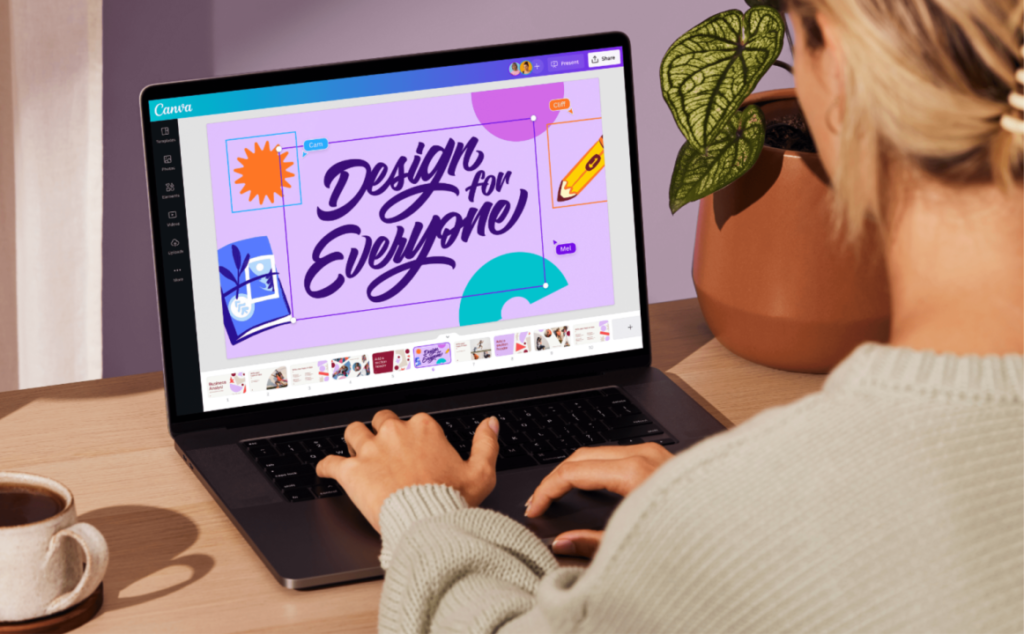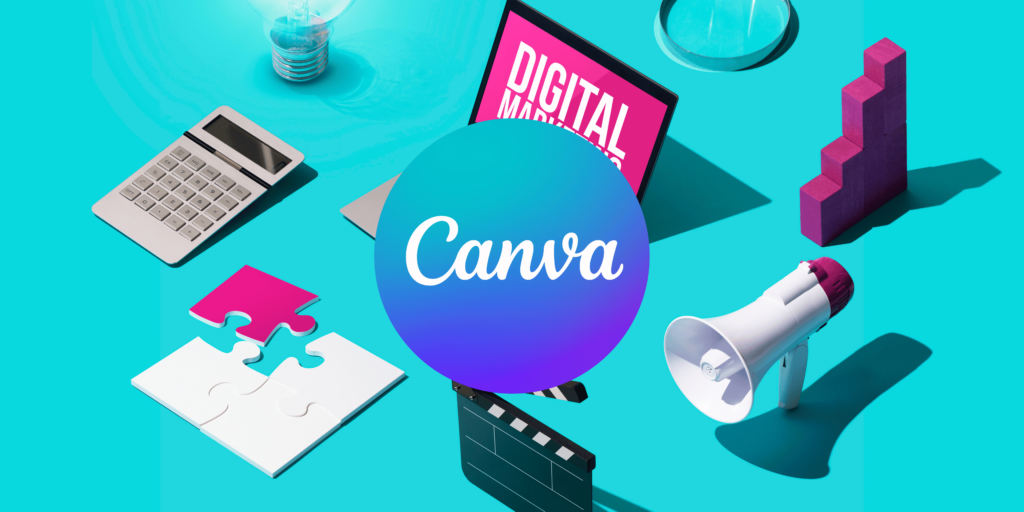Introduction
Canva has become a game-changing design platform, empowering everyone from beginners to professionals to create stunning visuals effortlessly. With its continuous evolution, the big question on every designer’s mind is: what’s next? As we look to 2025, here are some predictions for the exciting new features Canva might roll out to enhance its already impressive suite of tools.

1. Advanced AI-Driven Design Suggestions
AI is already making waves in Canva with features like Magic Resize and Background Remover. By 2025, we can expect even more sophisticated AI capabilities, such as:
- Design Autocomplete: Imagine AI suggesting the next design element based on your project style and intent.
- Content Creation Insights: Real-time tips on improving your design’s engagement based on platform trends and audience preferences.
- Smart Typography Pairing: Automatic font pairing suggestions tailored to your brand identity and design tone.
2. 3D Design Capabilities
As 3D design continues to grow in popularity, Canva could introduce:
- 3D Text and Graphics: Users might be able to create 3D elements directly within Canva without needing external software.
- 3D Animation Tools: For advanced motion graphics, enabling more dynamic and immersive designs.
- AR (Augmented Reality) Integration: Templates for AR filters or effects that can be used in social media and marketing campaigns.
3. Enhanced Collaboration Features
With remote work becoming the norm, Canva’s collaboration tools are likely to evolve further, including:
- Live Design Sessions: Real-time co-editing with teammates, complete with voice and video chat.
- Team Libraries 2.0: Improved asset organization for large teams, including tagging, advanced search, and version history.
- Approval Workflows: Streamlined feedback loops with built-in approval systems for designs.
4. Personalized Brand Management
As Canva continues to serve businesses of all sizes, we might see upgrades to its Brand Kit feature:
- Dynamic Brand Kits: Multiple brand kits for different campaigns or subsidiaries.
- Brand Voice Integration: AI tools that help maintain a consistent tone across all text elements.
- Performance Analytics: Insights into how branded designs are performing across various platforms.
5. Expanded Animation and Video Features
With the increasing dominance of video content, Canva might expand its video and animation capabilities:
- Customizable Animation Paths: Advanced animation options to create unique motion paths for elements.
- Video Editing 2.0: Features like multi-track editing, green screen removal, and cinematic transitions.
- Interactive Video Templates: Designs that allow clickable or interactive elements for immersive experiences.
6. Integration with Emerging Platforms
As new social media and content platforms emerge, Canva is likely to adapt by offering:
- Templates for New Platforms: Designs tailored to platforms like BeReal, new versions of TikTok, or other yet-to-be-launched social networks.
- API Integrations: Seamless publishing to platforms beyond the usual suspects, such as niche SaaS tools or intranet systems.
- Metaverse Compatibility: Templates for virtual environments or assets optimized for the metaverse.
7. Marketplace Evolution
Canva’s existing marketplace for templates and elements could evolve into:
- Designer-Driven Marketplaces: Independent designers selling custom templates directly on Canva.
- Subscription Bundles: Access to exclusive templates, fonts, and assets through tiered subscription plans.
- NFT Integration: Tools for creating, minting, and selling digital art and NFTs directly through Canva.
8. Sustainability-Focused Design Tools
With sustainability becoming a global priority, Canva might introduce features that promote eco-friendly design practices:
- Carbon Footprint Indicators: Metrics showing the environmental impact of print designs.
- Sustainable Templates: Designs optimized for digital use to reduce paper waste.
- Eco-Conscious Print Partners: Partnerships with sustainable printing services
9. Gamification of Design Learning
To keep users engaged and enhance their skills, Canva could incorporate gamified learning elements:
- Design Challenges: Weekly or monthly challenges with rewards for top creators.
- Skill Badges: Achievements for mastering specific tools or techniques.
- Interactive Tutorials: Step-by-step, hands-on guides for learning advanced features.
Conclusion
The future of Canva is brimming with possibilities, from leveraging advanced AI to embracing emerging technologies like AR and 3D design. As we move into 2025, these predicted features could revolutionize the way we create, collaborate, and share visuals. One thing is certain: Canva will continue to make design accessible, innovative, and exciting for everyone.
To Read More Blogs, Visit GoDigital360Degree.



Leave a Reply